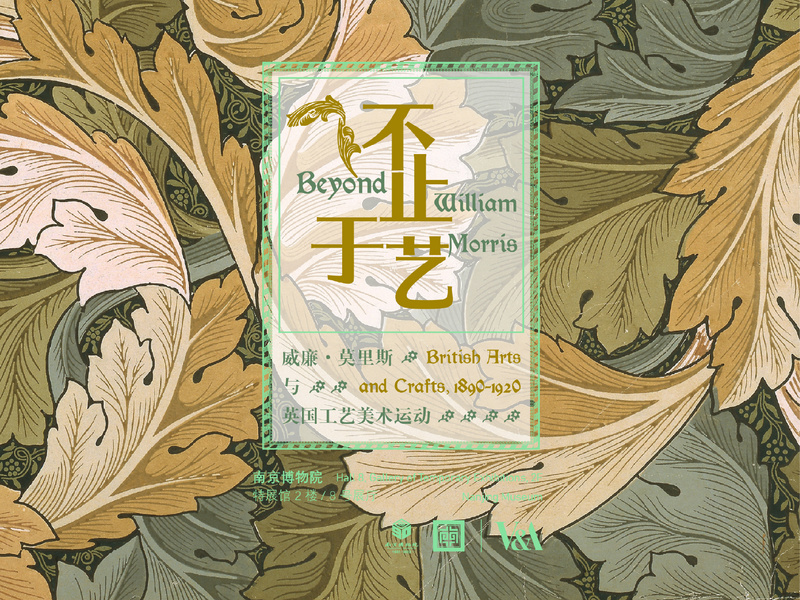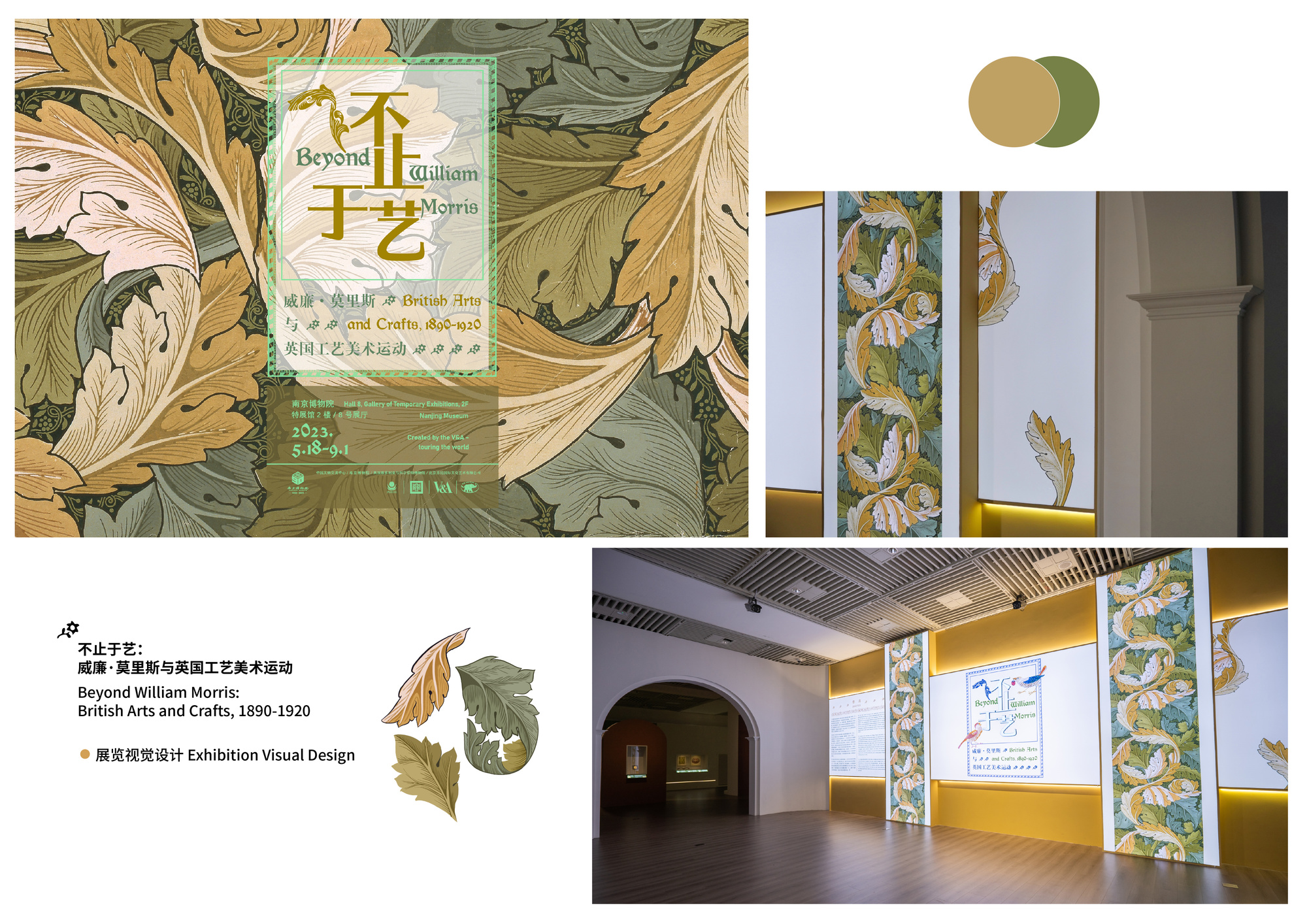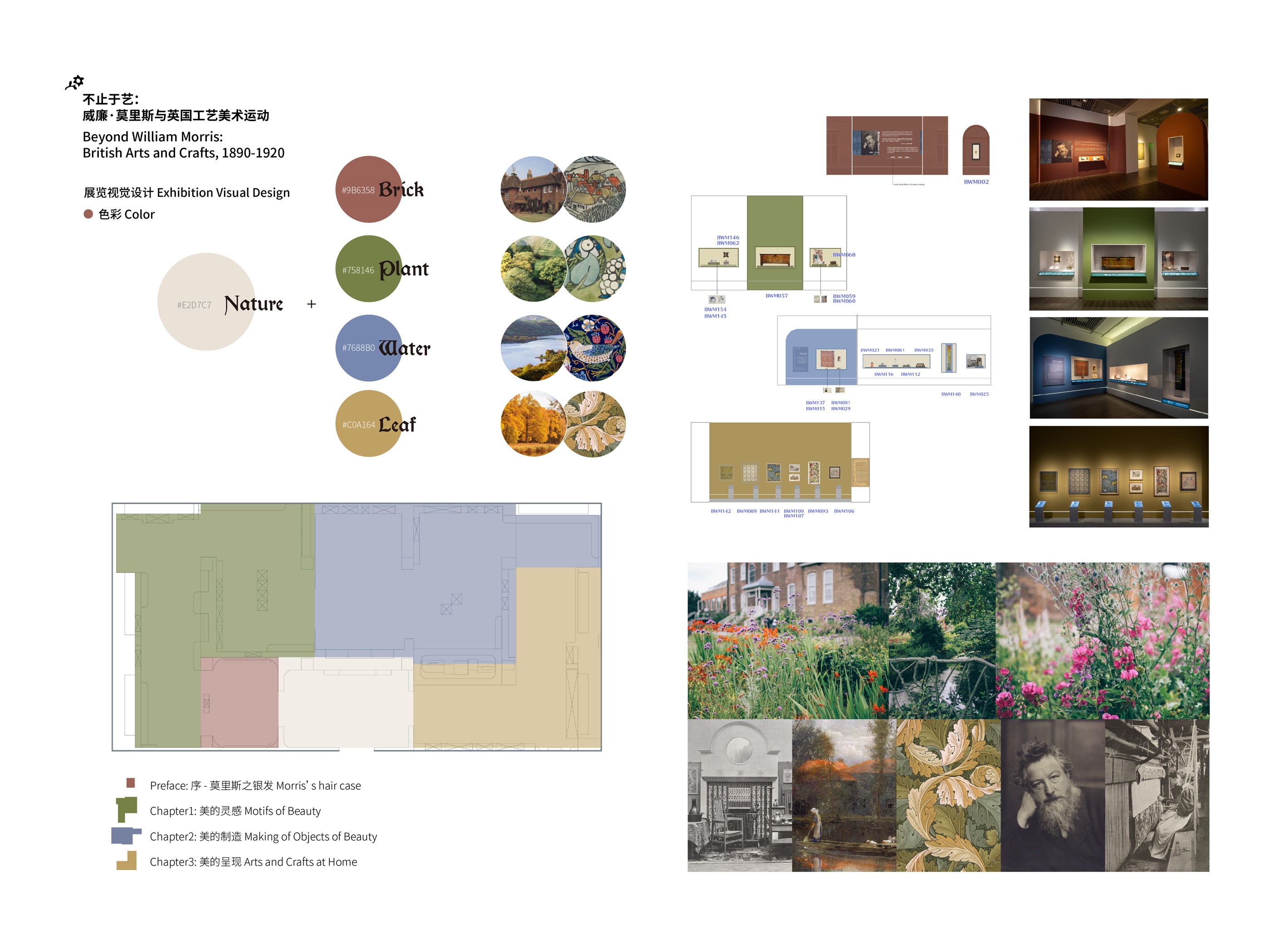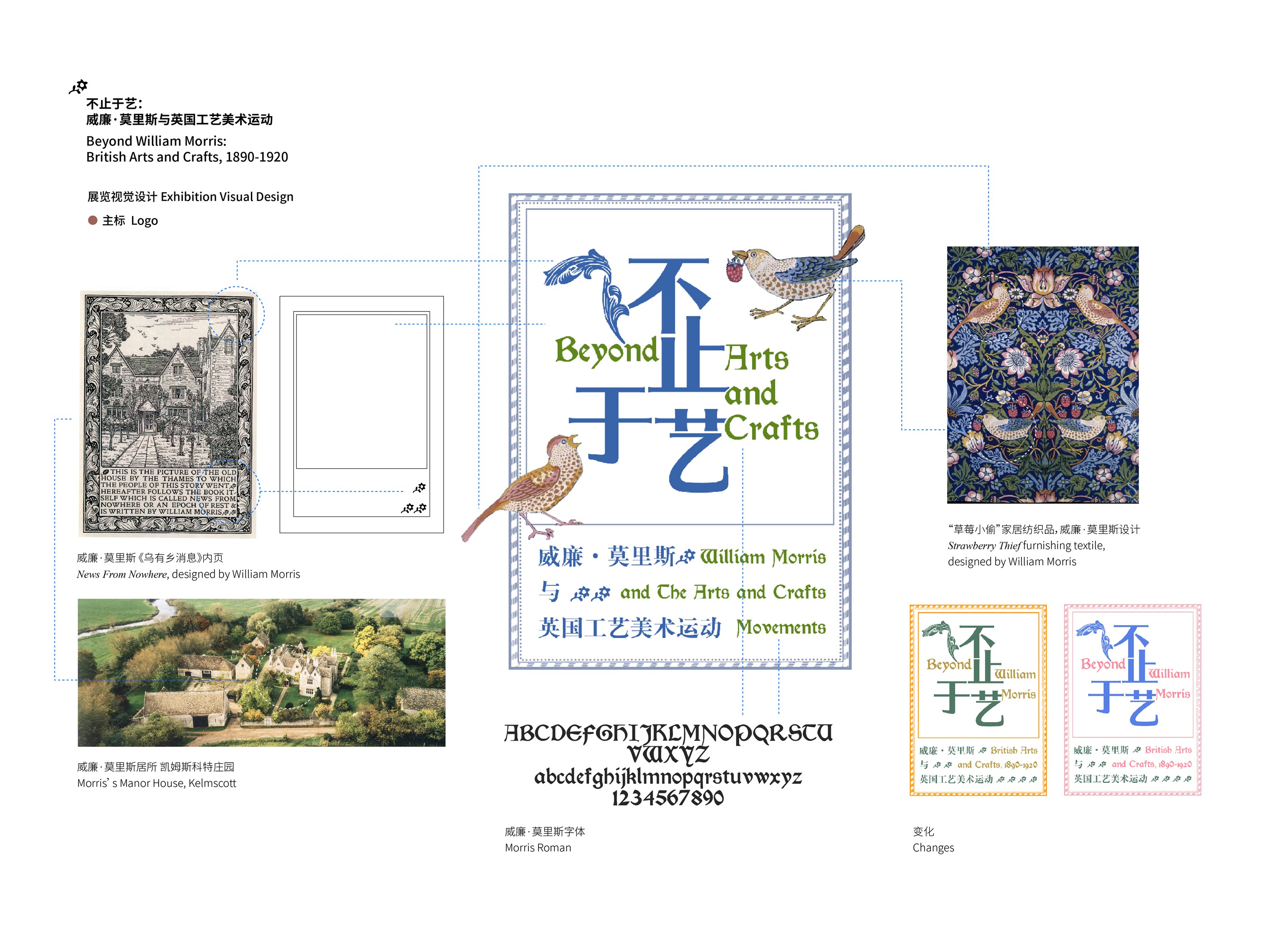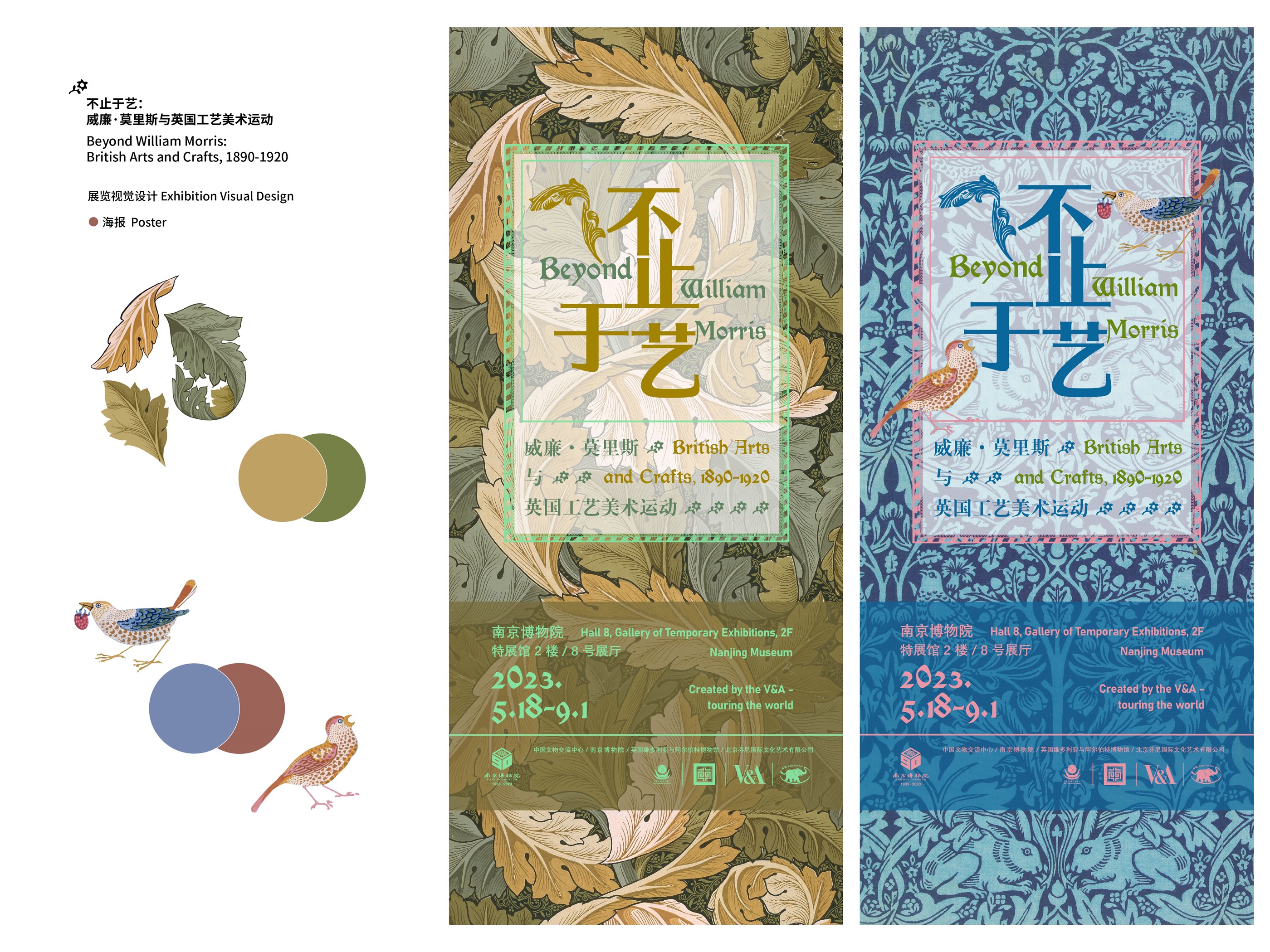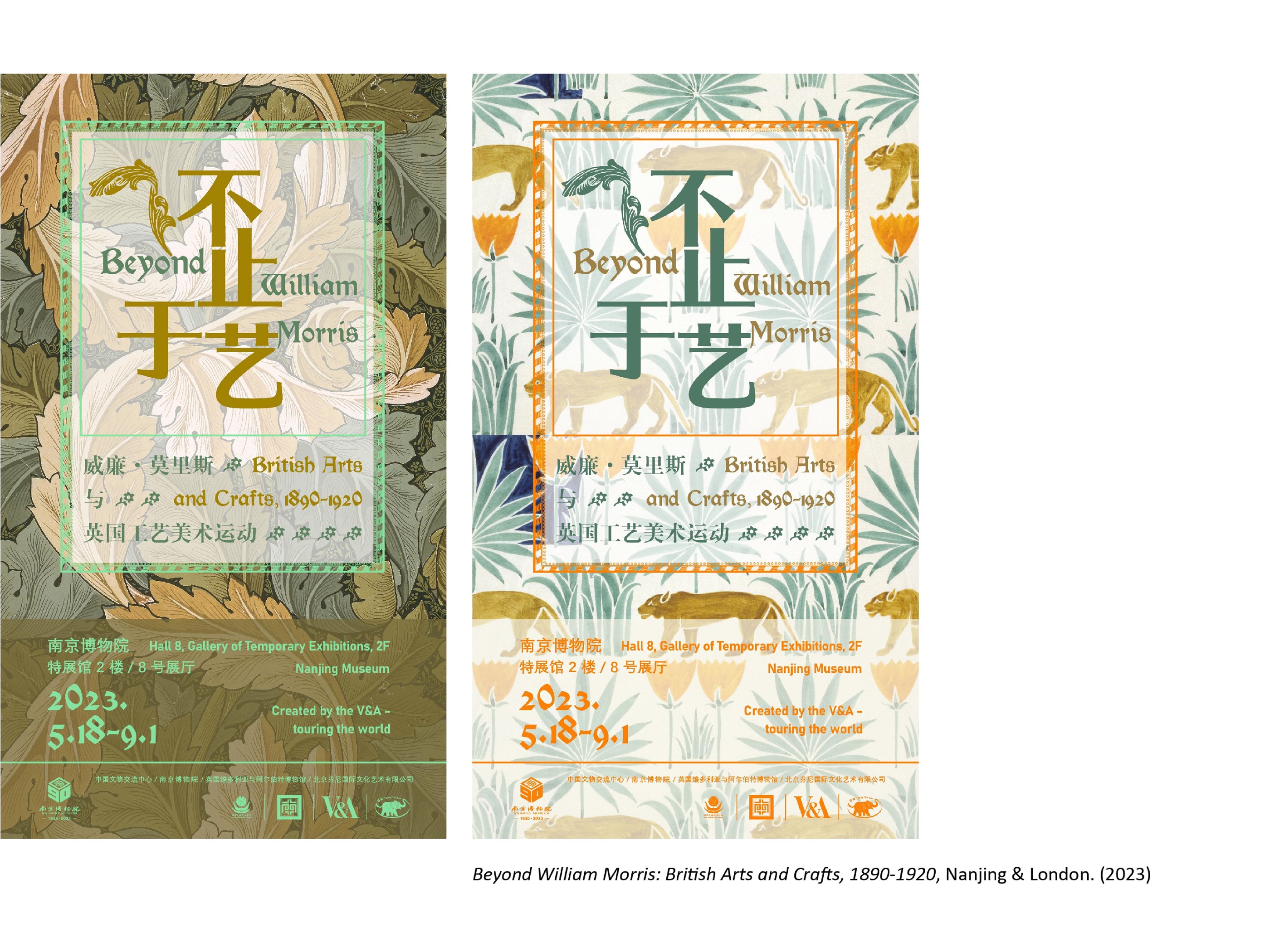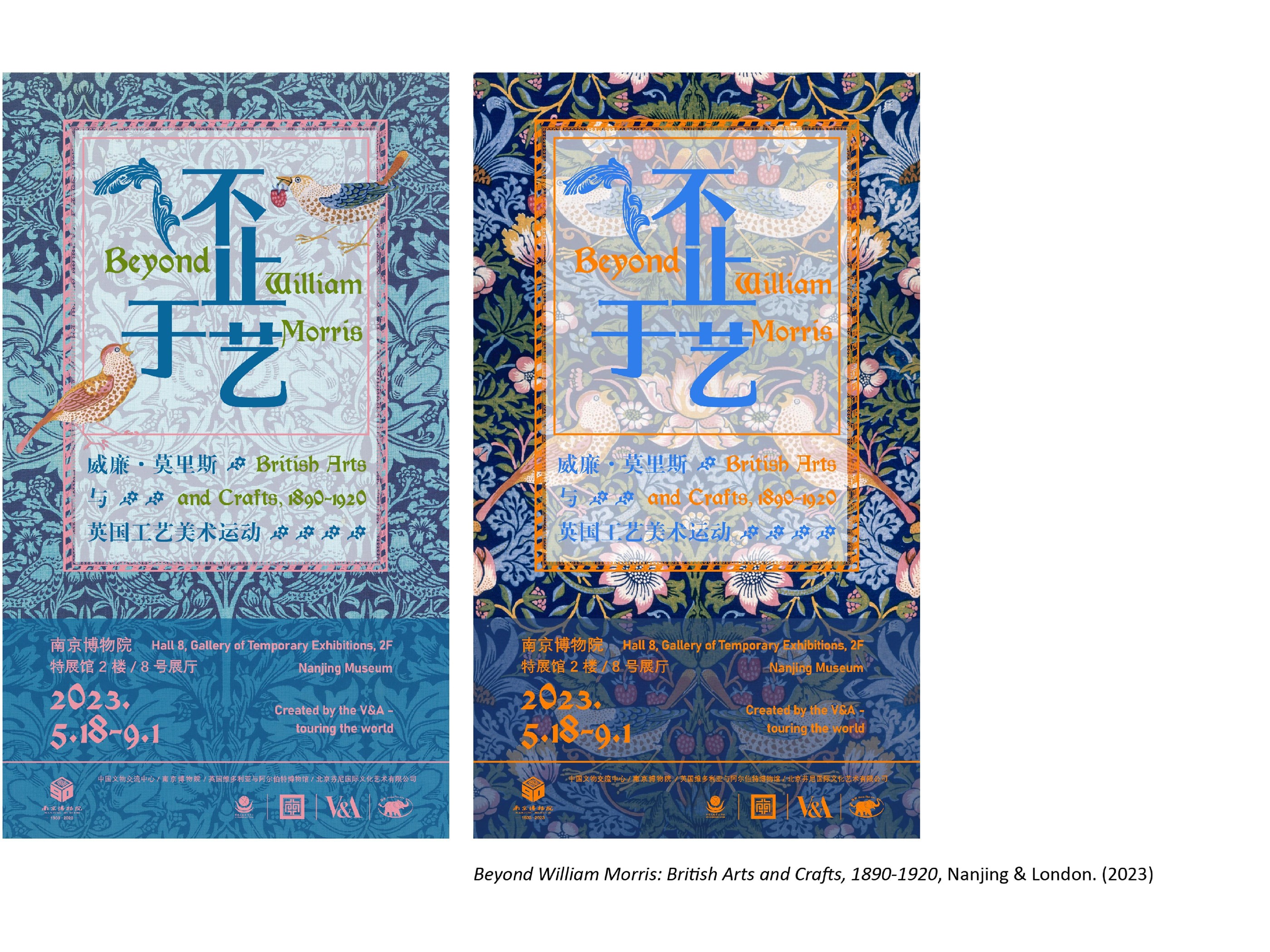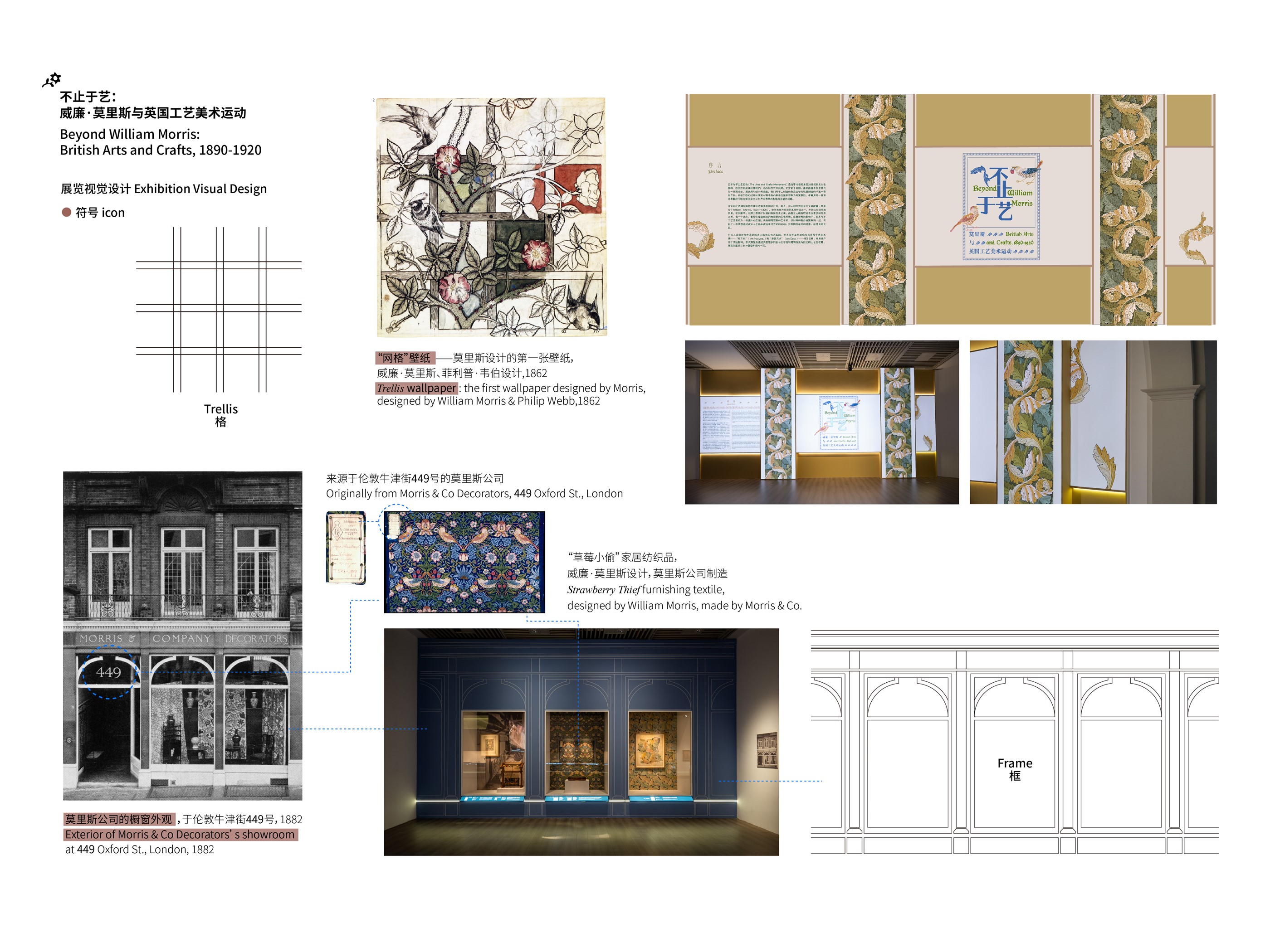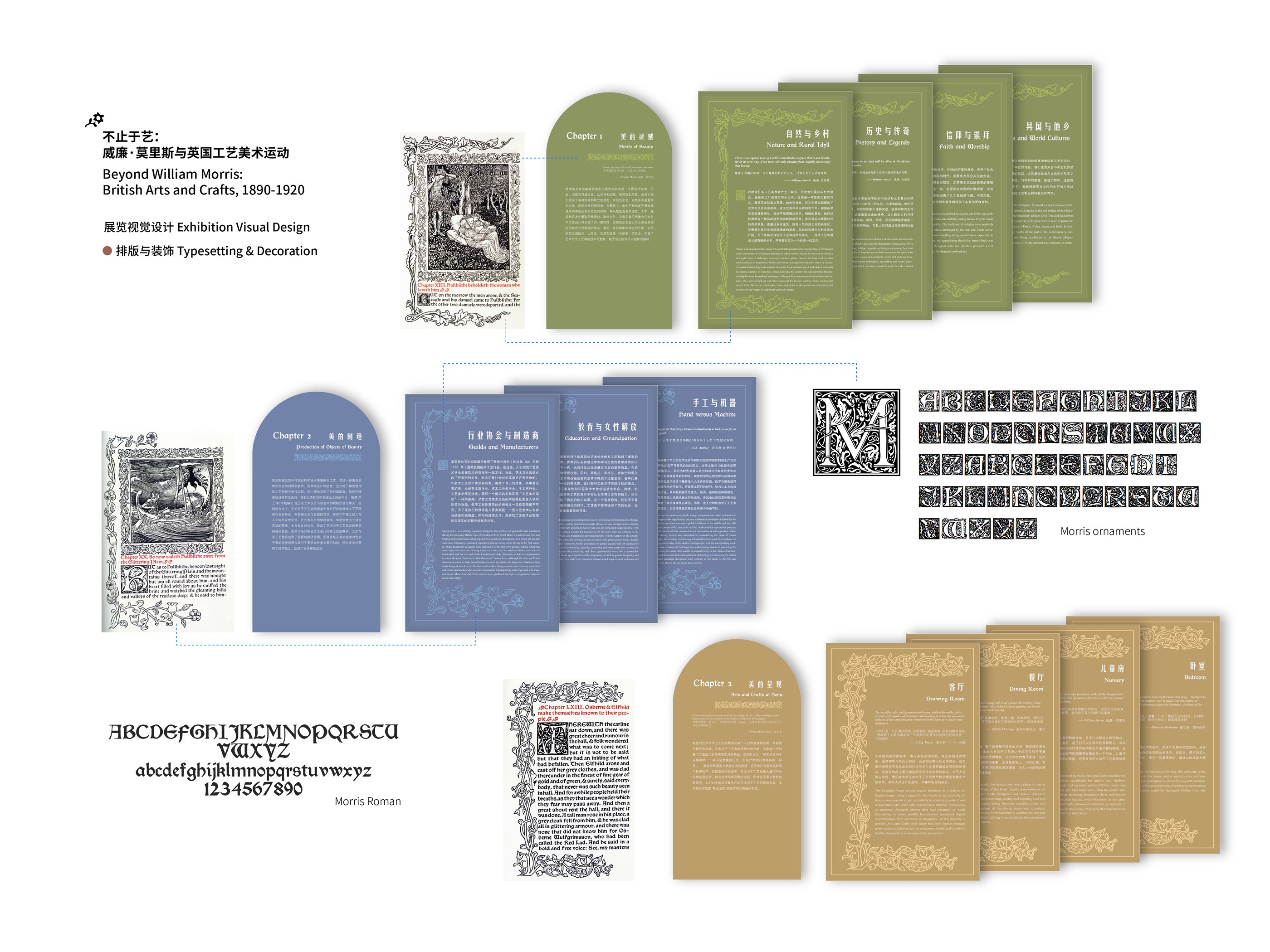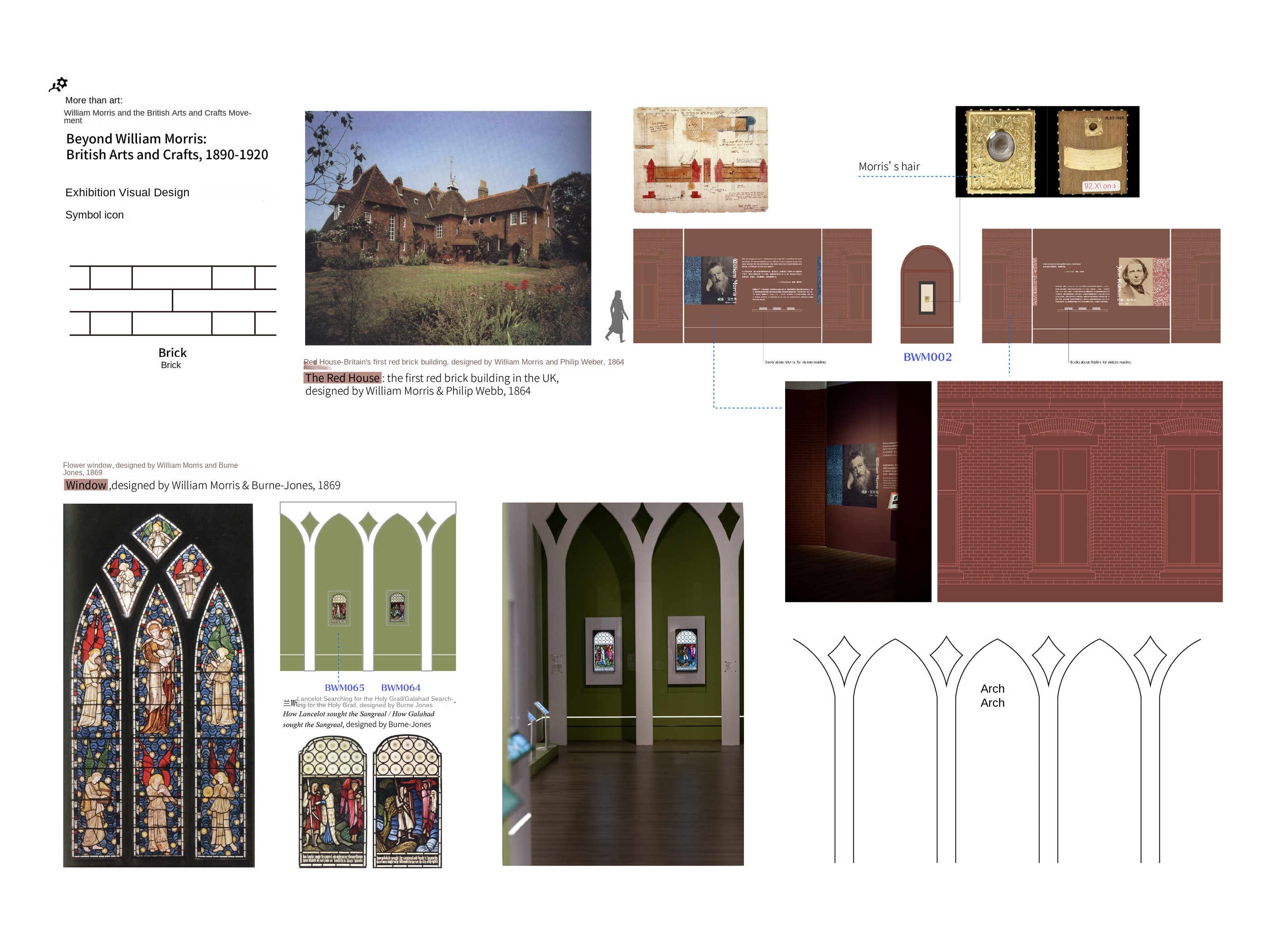
Poster & Preface
Visual symbols: the first wallpaper "grid (Trellis)" designed by William Morris (see later picture), the scaffolding in the garden, the pattern of buttercup and so on.
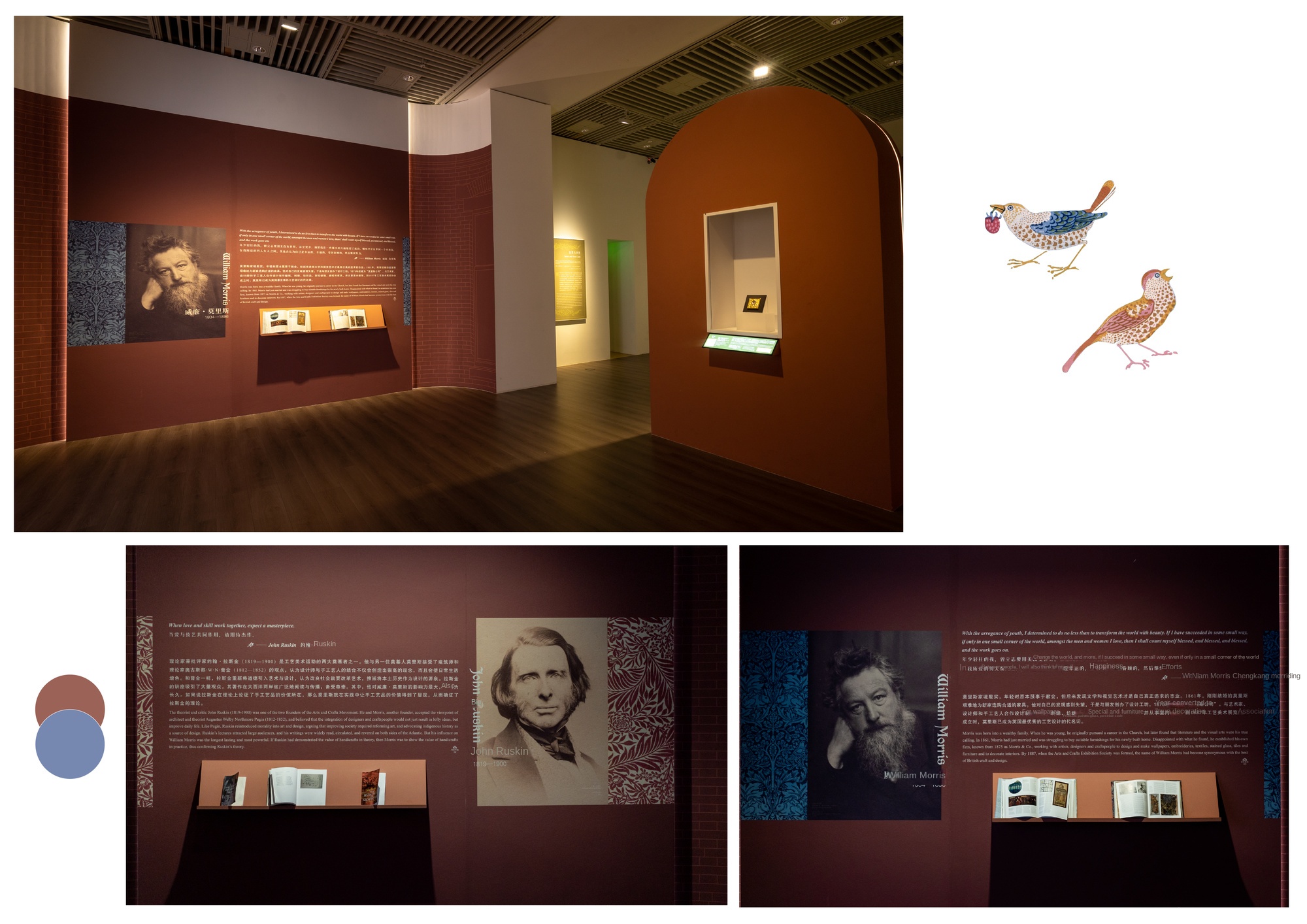
"The Red House" part of the scene
Inspired by William Morris's design of Britain's first red brick building-"the Red House" (the Red House), with brick lines and brick red color, indicating this British Arts and Crafts Movement (the British Arts and Crafts Movement) period of the representative building. This area displays the "hair of William Morris" in a similar relique box, which has become a spiritual symbol. On both sides is the introduction of John Ruskin (John Ruskin) and William Morris (William Morris), the founder of the Arts and Crafts Movement, and related literature.
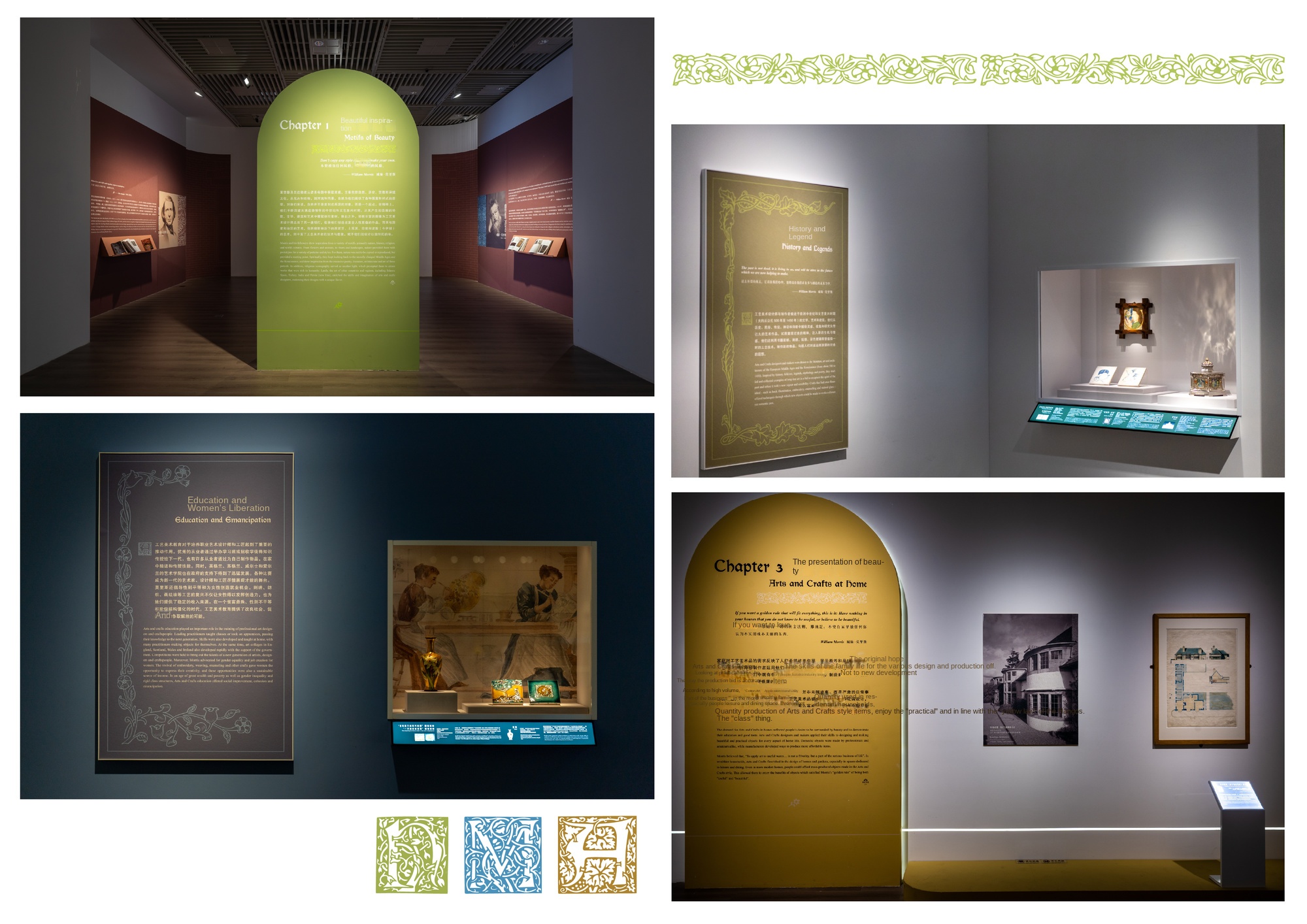
Graphic Layout and Decoration Typesetting & Decoration
The decorations and fonts are inspired by William Morris's related publications, such as News from Nowhere.
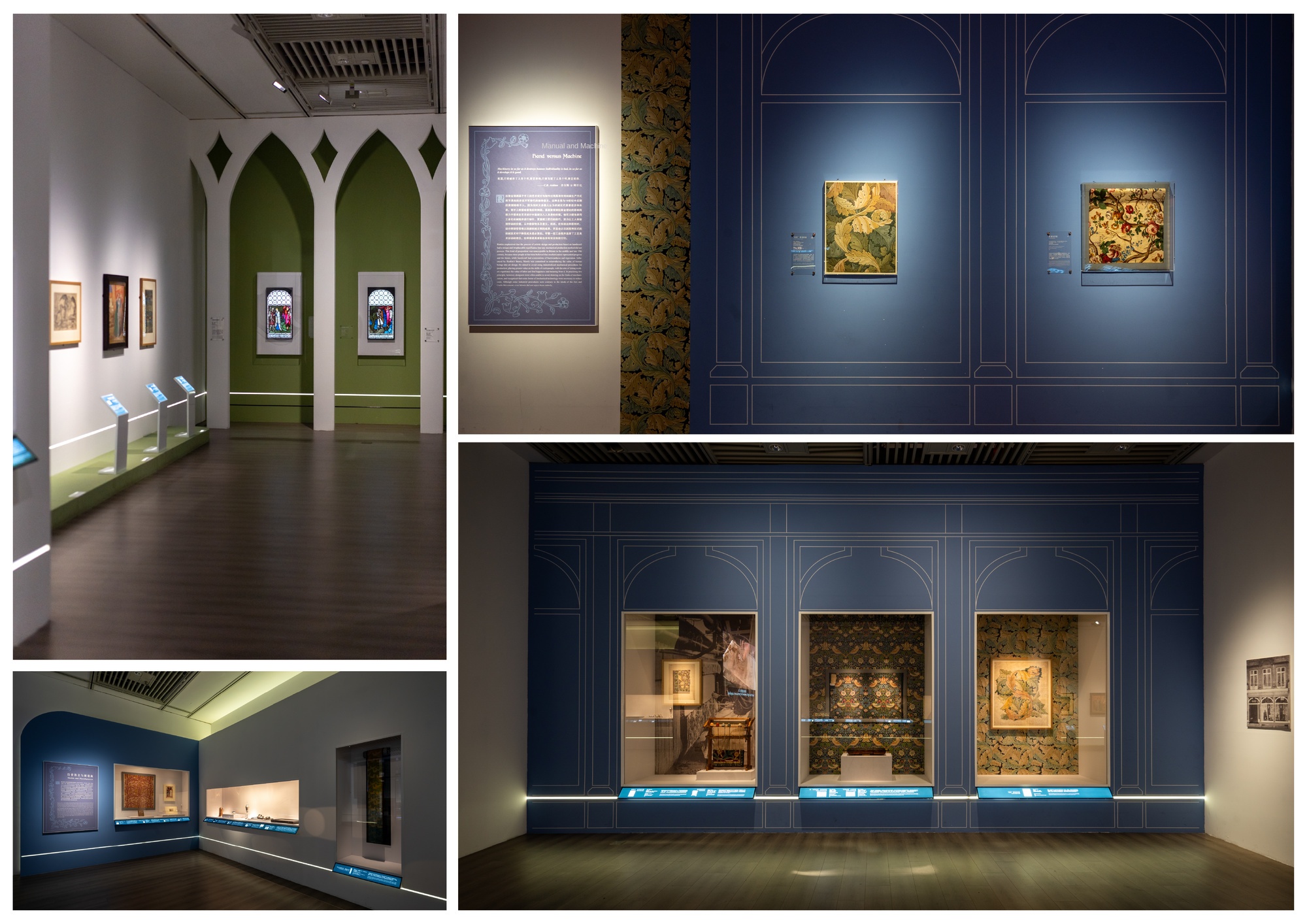
Arched, wireframe visual symbol space "Arch" "Frame" Space
The "arched" area of the green space shows stained glass, so this visual language is used to set off the atmosphere. White line frame in blue, inspired by William Morris & Co. The exterior of the shop at 449 Oxford Street in London, which shows the fabric works of one of William Morris's masterpieces, "Strawberry Thief", from shop 449.
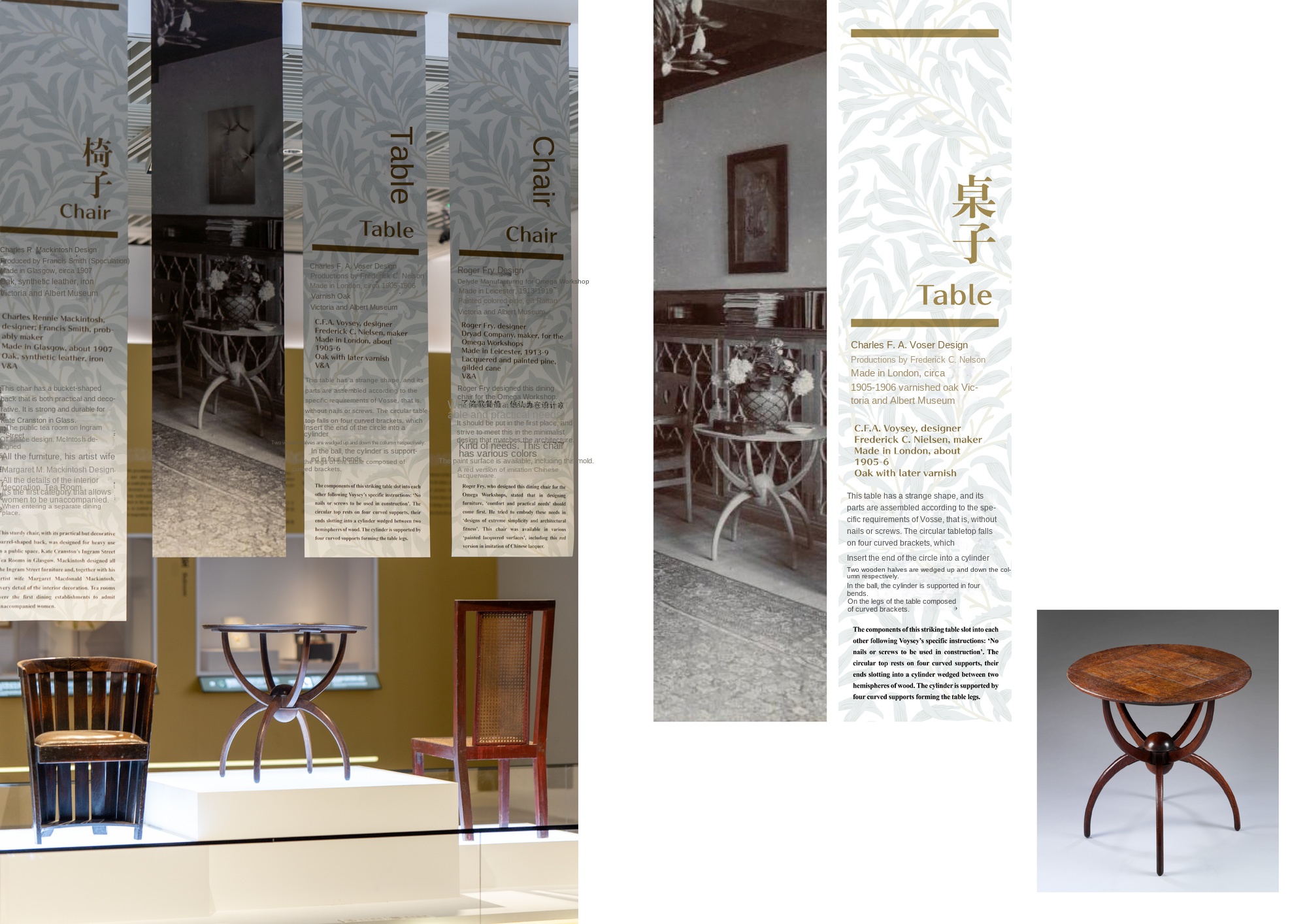
Label Design
In the furniture area, in the open and breathable space, hanging the explanatory board with pictures and texts not only plays the role of explanation, but also plays the effect of partition decoration, which is very modern and innovative. The background of the description board is selected from William Morris's work "Wicker" (Willow)
Visual Design for "Beyond Art: William Morris and the British Arts and Crafts Movement" Exhibition Visual Design for ''Beyond William Morris: British Arts and Crafts, 1890-1920''
Detailed design ideas and work details
More than Art-Secret Realm Space
Visual presentation, background music: British composer Edward Elgar (1857-1934) late romantic music "The Wand of Youth" (this video will not be publicly displayed due to copyright)
This work is a visual design for the exhibition "More than Art: William Morris and the British Arts and Crafts Movement" (Beyond William Morris: British Arts and Crafts, 1890-1920). The design adheres to the spirit of William Morris and the arts and crafts movement, and the innovative mind of Chinese design. Inspired by nature, craftsmanship, symbols, etc., it aims to present a sincere, faithful and warm visual experience. With a simple, flexible and connotative design style, Let the viewer experience the beautiful changes that design brings to life, and pay tribute to the pioneers of the times who have great influence on China and the world design. The visual design of this exhibition mainly includes the following parts: [1] Color, [2] Logo, [3] Poster, [4] Icon, [5] typesetting and decoration Typesetting & Decoration. These five parts focus on the excavation of details and spiritual connotation.
Morris's design concept and practice were introduced into China in the early 20th century, which had a significant impact on Chinese modern art and design. Morris's thought was reflected in the aesthetic education trend, the development of industry and the national goods movement. Morris gave much inspiration to the development of modern Chinese architecture, furniture, interior design, graphic design and commercial art in modern China.
The exhibition is a collaboration between the Nanjing Museum and the Victoria & Albert Museum (V & A). The father of modern design, William Morris (William Morris) and the works of artists from the Arts and Crafts period were exhibited in China for the first time. The exhibition selects 150 pieces of fine works collected by V & A to explore the artistic trend of British arts and crafts movement led by Morris and its far-reaching influence on people's life at that time and later generations.
The exhibition is divided into three parts: "Motifs of Beauty", "Making of Objects of Beauty" and "Arts and Crafts at Home". It allows the audience to learn about this period of vitality and creativity in the history of British design through rich exhibits full of life flavor, such as artists' designs, wallpapers and textiles, furniture, ceramics, metal products and jewelry, experience the design concept and spiritual connotation of "combining art and technology.
As the father of modern design, William Morris has a great influence on the design circles in China and the world. With a feeling of tribute, the designer in the design process, a large number of relevant literature, to seek a faithful and sincere design concept, and strive to the visual design of the heart for the Chinese audience to provide a modern design giant "link" bridge, to create a new perspective to "see" the pinnacle of modern design.
The visual design of this exhibition mainly includes the following parts: [1] Color, [2] Logo, [3] Poster, [4] Icon, [5] typesetting and decoration Typesetting & Decoration. These five parts focus on the excavation of details and spiritual connotation, aiming at looking back at the world design history, paying tribute to the master's era and looking forward to the future of Chinese design.
Wang Wenyan, exhibition designer and librarian of Nanjing Museum Exhibition Art Institute, Master of Art and Media Curation of City University of Hong Kong.
Focusing on the practice and research of museum exhibition design, he mainly designed "Endless Collection: Su Shi's Artistic Spirit of Painting and Calligraphy" (2024), "Yurun China: A Ten Thousand Years of Epic Picture of Chinese Jade" (2024), "More than Art: William Morris and British Arts and Crafts Movement" (V & A Cooperation Exhibition, 2023), "Yang Zhimiao: special exhibitions such as" Exhibition of Chinese Painting in the 20th Century "(2019). The exhibition design won more than ten awards, such as the National Museum Top Ten Exhibition Award. The poster design was exhibited at the William Morris Gallery (William Morris Gallery). He has written many journal papers and is active in various academic activities, such as "coruscating new opportunities: when digital humanities enter the International Symposium of museums" (Art Museum of the University of Hong Kong, 2024), "Young Scholars Forum at the main venue of International Museum Day in China" (Hubei Provincial Museum, 2022).
Research interests: Museum exhibition art research, multi-sensory design, exhibition design history.







